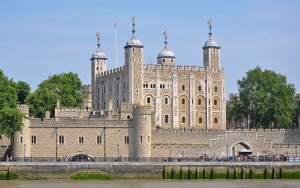English attractions see rise in visitor numbers during 2013

Visits to attractions in England increased by five per cent in 2013 according to VisitEngland’s Annual Attractions Survey.
This demonstrates the important contribution England’s attractions make to the UK economy and the potential for future growth in the tourism sector.
The research shows that despite challenging economic conditions, those attraction businesses which are investing in marketing and digital platforms have seen an increase in their visitor numbers and revenue, with gross revenue up by five per cent across the sector.
This investment reveals the emergence of a strong digital trend, with 18 per cent of attractions now offering mobile apps compared with only seven per cent in 2012.
Almost all attractions now have a website, with 21 per cent offering an online booking facility, and Facebook and Twitter now in common use.
The proportion of attractions offering some form of digital communications other than a website increased significantly from 67 per cent in 2012 to 77 per cent in 2013.
Those attractions offering some form of digital communications platform (excluding just a website or online booking facility) in 2013 saw gross revenue increase by six per cent, but by only three per cent among sites who do not.
Results also reveal that attractions which invested more money in marketing in 2013 than previously saw an eight per cent uplift in visitors and a ten per cent increase in revenue, where those who spent less on marketing saw a one per cent increase in visitors and only a two per cent rise in revenue.
Regionally, tourism in London is clearly booming as it tops the list with visits to attractions up by right per cent in 2013, followed by the North East (up six per cent) and the East Midlands (up five per cent), indicating the important role of England’s attractions in enticing people to explore England outside of London.
VisitEngland chief executive James Berresford said: “Attractions in England are core to England’s tourism offer and we are so fortunate to have such a wonderful and wide variety of indoor and outdoor attractions to suit all visitors.
“With a five per cent increase in both visitor numbers and gross revenue for 2013, our attractions continue to contribute greatly to the visitor economy and show enormous potential for future growth.
“It’s clear that investment into the sector is key and the benefits are evident in the results for attractions continuously investing in both marketing and digital platforms.”
The five per cent uplift in visits to attractions was largely driven by an increase in visits to those charging for admission, where there was growth of seven per cent, and visits to free attractions also growing by three per cent.
The Tower of London remains the most visited attraction in the paid for category with 2.9 million visits – an increase of 18.4 per cent on last year, followed by St Pauls Cathedral with 2.1 million visits and Westminster Abbey with 1.8 million visits.
As seen in previous years, many of the most-visited paid for attractions were part of Britain’s rich history and heritage, such as Stonehenge, Houses of Parliament and Big Ben, the Roman Baths and Tatton Park – however, wildlife parks and gardens also performed well.
Visits to free attractions were up three per cent overall in 2013.
The British Museum marked its sixth consecutive year as the most-visited free attraction in England with 6.7 million visitors, followed by the National Gallery, Natural History Museum and Tate Modern.
Across the country, the most visited free attractions regionally include Durham Cathedral, the National Railway Museum in York, the Museum of Liverpool and Bristol Museum and Art Gallery, all making the list of twenty most visited free attractions in their regions.

